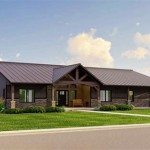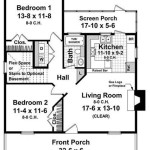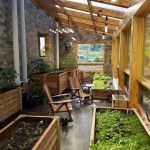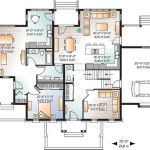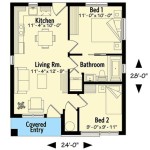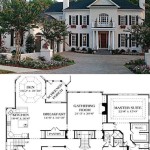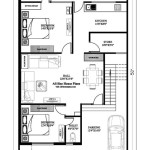Exploring 2-Bedroom Double Wide Mobile Home Floor Plans
Two-bedroom double wide mobile homes offer a practical and affordable housing solution for individuals, couples, and small families. These homes provide a comfortable living space, incorporating many of the amenities found in traditionally built houses, but with a potentially lower initial cost and a quicker construction timeframe. The floor plans available for these homes are diverse, catering to different lifestyles and preferences, and understanding these layouts can assist prospective buyers in making informed decisions.
The term "double wide" signifies that the home is constructed in two separate sections at a manufacturing facility. These sections are then transported to the designated site and joined together to form a single dwelling. This modular construction process allows for efficient production, contributing to the cost-effectiveness of mobile homes. The resulting structure offers significantly more square footage compared to single wide models, allowing for more flexible and spacious floor plans. Consequently, 2-bedroom double wide mobile homes frequently feature larger living areas, more expansive kitchens, and improved storage options.
The layout variations within 2-bedroom double wide mobile homes are considerable. Factors such as the overall square footage, the placement of bedrooms and bathrooms, and the integration of common living areas influence the flow and functionality of each floor plan. Understanding the common features and available customizations is crucial for selecting a plan that aligns with individual needs and priorities.
Key Considerations When Choosing a 2-Bedroom Double Wide Floor Plan
When embarking on the process of selecting a 2-bedroom double wide mobile home floor plan, several essential aspects require careful consideration. These factors directly impact the livability and overall satisfaction with the chosen home. Overlooking these considerations can lead to dissatisfaction and potentially expensive modifications down the line.
Square Footage and Layout: The total square footage of the home dictates the size of individual rooms and the overall spaciousness. A larger square footage generally translates to more storage, bigger living areas, and potentially a dedicated dining space. The layout, specifically the arrangement of rooms, is equally crucial. Open-concept designs promote a sense of spaciousness and facilitate social interaction, while more compartmentalized layouts offer greater privacy and separation between living areas and bedrooms. Consider how the layout will accommodate daily routines, entertaining guests, and personal preferences for privacy and openness.
For example, a family with young children might prioritize an open-concept living area to easily supervise playtime, whereas a couple working from home might prefer a layout that includes a dedicated office space and minimizes noise transfer to the bedrooms. The placement of the bedrooms, particularly in relation to the living areas, impacts noise levels and privacy. Master suites, often located at one end of the home, offer a secluded retreat, while having both bedrooms adjacent to each other might be preferable for families with young children.
Bathroom Configuration: The number and placement of bathrooms are significant considerations. Most 2-bedroom double wide mobile homes feature at least two bathrooms: a master bathroom connected to the master bedroom and a guest bathroom accessible from the common areas. The configuration of these bathrooms can vary. Some master bathrooms include dual sinks, walk-in showers, and separate toilet rooms, while others offer a more basic setup. The guest bathroom may be a full bath with a tub/shower combination or a half bath with only a toilet and sink. Accessibility is another important factor, especially for individuals with mobility limitations. Wider doorways and grab bars can be incorporated into the bathroom design to enhance accessibility and safety.
Kitchen Design and Functionality: The kitchen is often considered the heart of the home, and its design significantly impacts the overall livability. Consider the amount of counter space, storage options (cabinets, pantry), and appliance placement. A well-designed kitchen should provide ample workspace for food preparation, sufficient storage for cookware and groceries, and a logical flow for cooking and cleaning. Common kitchen layouts include galley kitchens, L-shaped kitchens, and U-shaped kitchens. Each layout offers different advantages and disadvantages in terms of space utilization and functionality. The inclusion of an island or breakfast bar can provide additional counter space, seating, and storage. Furthermore, the placement of the kitchen in relation to the dining area and living room influences the flow of traffic and the overall social interaction within the home.
Common Floor Plan Variations
Numerous floor plan variations exist for 2-bedroom double wide mobile homes, each offering a unique combination of features and space allocation. Understanding these common variations can help potential buyers narrow down their options and identify a plan that best suits their specific needs.
Split Bedroom Layout: The split bedroom layout is a popular choice, particularly for families or individuals seeking increased privacy. In this configuration, the master bedroom is located at one end of the home, while the second bedroom is situated at the opposite end. The living areas, such as the living room, kitchen, and dining area, are typically positioned in the center of the home, separating the two bedrooms. This arrangement minimizes noise transfer between the bedrooms and provides a greater sense of personal space for occupants.
The split bedroom layout often includes a master suite, featuring a private bathroom and a walk-in closet. The second bedroom may have direct access to the guest bathroom or share it with the common areas. This layout is well-suited for families with older children, roommates, or individuals who work from home and require a quiet workspace.
Open Concept Living: Open concept floor plans emphasize spaciousness and connectivity between the living room, kitchen, and dining area. These areas flow seamlessly into each other, creating a large, open space that is ideal for entertaining and socializing. Open concept designs often feature fewer walls and partitions, allowing for natural light to penetrate throughout the home.
This layout is well-suited for individuals who enjoy hosting gatherings or prefer a more interactive living environment. The open kitchen allows for easy communication with guests while preparing meals, and the large living area provides ample space for seating and activities. However, open concept designs may offer less privacy and can be challenging to heat or cool efficiently due to the lack of separation between rooms.
Central Living Area with Adjoining Bedrooms: In this variation, the living room serves as a central hub, with both bedrooms located adjacent to it. This layout is common in smaller double wide models and offers a more compact and efficient use of space. The kitchen and dining area are typically located near the living room, creating a cohesive living space. While this layout may offer less privacy compared to the split bedroom design, it can be advantageous for families with young children who require close supervision.
The accessibility of both bedrooms from the central living area allows parents to easily check on their children during the night. This layout may also be more energy-efficient, as the common areas and bedrooms are clustered together, facilitating easier heating and cooling. However, noise transfer between the living area and bedrooms may be a concern, particularly during evening hours.
Customization Options and Considerations
While many 2-bedroom double wide mobile homes are offered with standardized floor plans, customization options are often available to tailor the home to individual preferences. These customizations can range from minor modifications, such as changing the flooring or paint colors, to more significant alterations, such as adding a porch or expanding the kitchen.
Minor Modifications: Minor modifications typically involve cosmetic changes that do not significantly alter the structural integrity of the home. These customizations include selecting different flooring materials (carpet, laminate, vinyl), choosing paint colors for the walls and trim, and upgrading the light fixtures. These changes can significantly impact the overall aesthetic of the home and reflect individual style preferences. While minor modifications are generally less expensive and easier to implement, they can enhance the visual appeal and comfort of the living space.
Structural Alterations: Structural alterations involve modifications that affect the structural integrity of the home, such as adding or removing walls, expanding rooms, or changing the placement of windows and doors. These customizations require careful planning and may involve additional costs for engineering and permits. However, structural alterations can significantly improve the functionality and livability of the home.
For instance, homeowners may choose to expand the kitchen to create more counter space and storage, add a porch to enhance outdoor living, or modify the layout of the bathrooms to improve accessibility. Before undertaking any structural alterations, it is essential to consult with a qualified contractor or the manufacturer to ensure that the modifications are feasible and comply with local building codes.
Appliance and Fixture Upgrades: Upgrading the appliances and fixtures can enhance the efficiency and convenience of the home. Options include selecting energy-efficient appliances (refrigerator, dishwasher, oven), installing high-efficiency plumbing fixtures (low-flow toilets, showerheads), and upgrading the lighting to LED fixtures. These upgrades can reduce energy and water consumption, resulting in lower utility bills and a more sustainable living environment.
Furthermore, upgrading the appliances and fixtures can improve the functionality and aesthetics of the home. Stainless steel appliances, granite countertops, and designer light fixtures can add a touch of luxury and sophistication to the living space. When selecting appliances and fixtures, consider the energy efficiency ratings, warranty coverage, and compatibility with the existing electrical and plumbing systems.
In conclusion, the selection of a 2-bedroom double wide mobile home floor plan requires careful consideration of various factors, including square footage, layout, bathroom configuration, and kitchen design. Understanding the common floor plan variations and customization options available can assist prospective buyers in making an informed decision and selecting a home that meets their specific needs and preferences. By prioritizing these essential aspects, individuals can create a comfortable and functional living space that provides a practical and affordable housing solution.

Double Wide Floor Plans The Home Az

Double Wide Mobile Homes Factory Expo Home Center

Double Wide Mobile Home Floor Plans Factory Select Homes

Double Wide Mobile Homes Factory Expo Home Center

10 Great Manufactured Home Floor Plans Mobile Living

Double Wide Mobile Home Floor Plans Factory Expo Centers

Canyonville 28 0 X 44 1188 Sqft Mobile Home Champion Homes Center

Wiggins The Home Az

24 0 X 32 747 Sqft Mobile Home Champion Homes Center

Manufactured Home Floor Plan The Imperial Limited Model Imlt 3449b 2 Bedrooms Baths Mobile Plans Homes House

